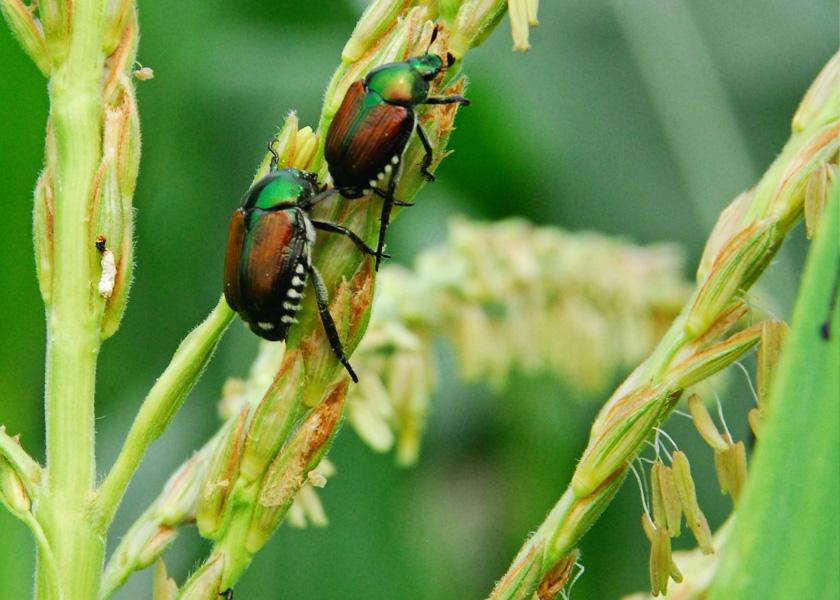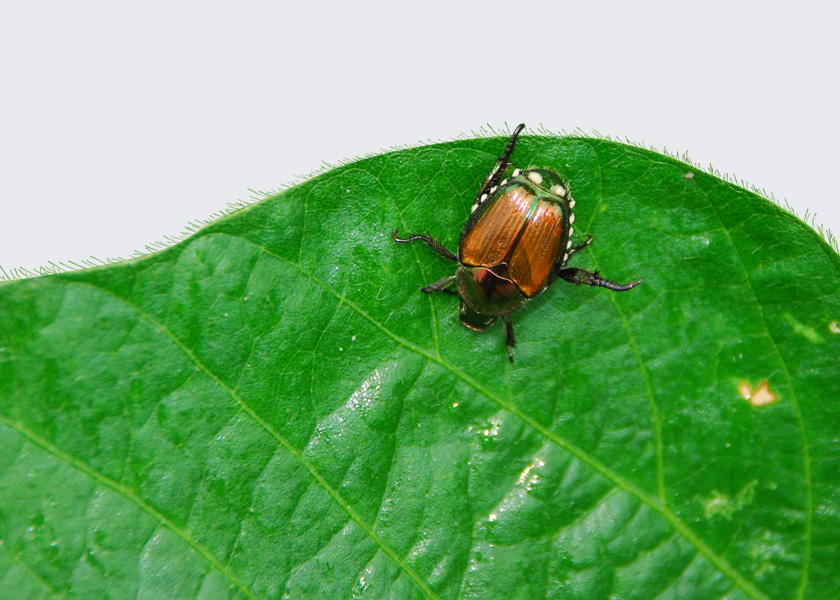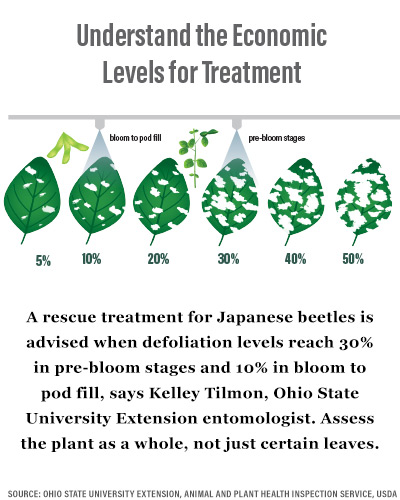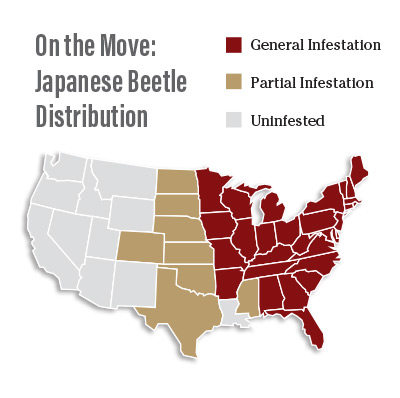Unspoken Truths About Pests: Japanese Beetles

These pests have colossal appetites but don’t tend to pack an economic punch
Social, mobile and voracious, Japanese beetles can crowd into your corn or soybean fields for a two-month party. Their damage is often just cosmetic, but it’s important to understand the timing of when they choose to defoliate soybeans or clip corn silks.
SMALL BUG, BIG BUFFET
Japanese beetle adults are ½" in length and metallic green in color with bronze- or copper-colored wing covers. If you look closely, you’ll see 12 white tufts of hair or bristles on the edge of their shells (five on each side and two on the back end).
 Japanese beetles have a one-year life cycle. The larva overwinters deep in the soil and completes its growth the next spring. The adult emerges from the ground in midsummer and can be found in late June through September. Photo: Darrell Smith, Farm Journal
Japanese beetles have a one-year life cycle. The larva overwinters deep in the soil and completes its growth the next spring. The adult emerges from the ground in midsummer and can be found in late June through September. Photo: Darrell Smith, Farm Journal
“Adult Japanese beetles have an unusually broad host range; they will feed on over 300 plant species,” says Kelley Tilmon, Ohio State University Extension entomologist. “When they first reach an area, they are usually noticed in horticultural and garden settings long before they become agricultural pests.”
Japanese beetles have a one-year life cycle. The larva overwinters deep in the soil and completes its growth the next spring. The adult emerges from the ground in midsummer and can be found in late June through September.
“The adults generally live 60 days during the summer,” says Ashley Dean, Iowa State University Extension specialist for field crop entomology. “They alternate between feeding, mating and laying eggs during those 60 days.”
CLIPPED SILKS, LACY LEAVES
In corn, Japanese beetles clip off silks, but as long as they don’t infest before pollination, they tend to not cause economic damage, Dean says.

For soybeans, adult Japanese beetles feed on the leaves, leaving a lacy appearance. The feeding damage often looks worse than it really is because it is concentrated in the top of the plant, Tilmon says.
“That’s why you need to assess the plants as a whole and the field as a whole,” she says.
Once you assess defoliation, and if the beetles are still present, you can choose from several insecticide options for corn or soybeans. But in general,
Tilmon says, entomologists recommend a conservative approach to management.
 Source: APHIS
Source: APHIS
Sara Schafer uses her Missouri farm roots to cover crop management, business topics, farmland and more.







